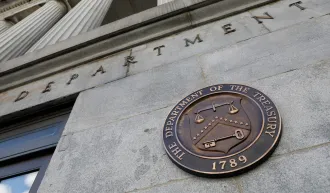Understanding the Linkage Between ROI and the Economic Rate of Return
A group of scholars explore a term that "has only been vaguely understood."
January 01, 2007
For years, return on investment (ROI) and related financial accounting ratios have been widely used as key measures of business profitability. But what three accounting professors from Stanford GSB recently discovered was that, despite its widespread acceptance, the economic meaning of the ROI metric has only been vaguely understood.
The idea for their study arose through a casual conversation between faculty colleagues Stefan Reichelstein and Mark Soliman. Reichelstein, who specializes in managerial accounting, asked Soliman, a financial accountant, a question that targeted the intersection of their two disciplines: to what extent do traditional financial accounting ratios — return on investment, return on equity (ROE), and return on assets — reflect real economic profitability as described by the internal rate of return of a firm’s investment projects.
“I said to him, ‘Take a firm in a competitive industry such as steel, construction, or agriculture and suppose the industry is in a steady state. Should we expect a typical firm’s return on investment to come down to the cost of capital because in a competitive industry the real economic rate of return must be equal to the cost of capital?’” Reichelstein recalled. “Mark’s immediate answer was, ‘Of course, everybody knows that.’ And that’s how we got started, because (a) I certainly didn’t know it, and (b) I wasn’t so sure. When we began doing some calculations and model-building, it turned out there was a lot more to the story.”
For more than 40 years, business professionals and academics in accounting, finance, and economics have relied on ROI to infer a company’s economic rate of return. Conventional wisdom has recognized that financial accounting is subject to certain biases that could skew results, but people believed that these effects would “average out” over time, thereby enabling parity between ROI and real economic return. On the other hand, when companies such as those in the oil industry have been accused of abusing their market power, as evidenced by excessive accounting profitability, they tried to “explain away” high accounting returns by claiming that these standard metrics do not adequately measure real economic returns. “There wasn’t a real, mathematical understanding of the issue in any depth,” said Madhav Rajan, another professor of managerial accounting, who collaborated on the study.
To address this gap, Rajan, Reichelstein, and Soliman set out to develop a model that enabled them to examine analytically and empirically how a firm’s ROI was affected by two central variables: accounting conservatism and growth. Accounting was considered to be conservative if it resulted in book values that were understated because investments were written off faster than they should be, given the underlying pattern of project cash flows. Direct expensing of intangible investments is a prime example of such conservatism. Growth simply referred to the rate of change in new investments.
What the three GSB researchers learned is that accounting conservatism and past growth in investments jointly determine how ROI compares to the underlying economic profitability of a business. Given conservative accounting, higher growth tends to depress ROI, and this decline is accentuated by more conservative accounting rules. Conversely, the impact of more conservative accounting on ROI depends crucially on the rate of growth in new investments over the relevant time horizon. Taken together, the model showed that an average growth rate equal to underlying economic rate of return determines a pivotal point of the ROI metric.
“We started with the basics,” explained Rajan. “We modeled a firm as a collection of projects that are undertaken at various times such that the final ROI number is the aggregation of all of them. We also modeled the process by which the income from all of these projects gets aggregated so that we could determine how that ROI number would change if we modified the characteristics of the projects, the speed at which they’re growing, or the conservatism of the accounting.” To test the model and its theoretical hypotheses, the researchers used a data sample consisting of 43,680 firm-year observations from 1982 to 2002.
Reflecting on the results, Reichelstein said, “We created a tool for decoding the economic profitability of a firm given the accounting profitability reported in the ROI number.” Contrary to the earlier examples and numerical illustrations in textbooks and the relevant literature, “We now have a much more systematic grasp of the linkage between accounting and economic return,” he added.
In terms of its practical application to the business world, Rajan said investors could use the model to better evaluate firm performance in areas where they had previously been required to depend only on traditional financial accounting information. Reichelstein pointed out that the model also has managerial accounting applications inside a firm. “As a manager, it’s perfectly possible that one of your divisions has an ROI of 15 percent while another one has an ROI of 10 percent. However, you shouldn’t jump to the conclusion that the one giving you 15 percent is the one that’s adding more value to the business.” By applying the model — taking into account how rapidly both divisions have been growing and which has assets that may be more subject to conservative bias — management can more accurately determine the real economic profitability of both business groups.
The study, which the researchers presented at the 2006 Review of Accounting Studies at INSEAD near Paris and the 2006 Journal of Accounting, Auditing, and Finance Conference at NYU, has earned best paper awards at both events.
For media inquiries, visit the Newsroom.
Explore More

Recessions Are Painful, but Stagnant Growth Could Prove More Challenging

What If We Taxed Corporations’ Payouts, Not Profits?



